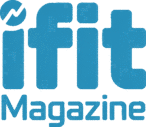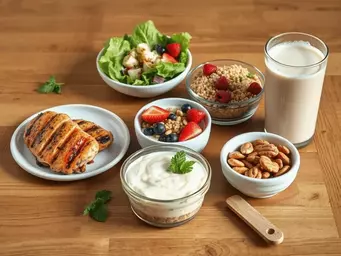
Tailor Fitness to Your Body
Have you ever considered how your unique body type can significantly shape your fitness journey? Understanding these classifications is not just a matter of curiosity; it can revolutionize your approach to workouts and nutrition.
What You Will Learn
- Know Your Body Type: Identifying whether you are an ectomorph, mesomorph, or endomorph can guide your workout and nutrition strategy for better results.
- Importance of Personalization: A personalized fitness plan tailored to your unique body type can enhance motivation and effectiveness.
- Flexibility is Essential: Stay adaptable with your fitness routine as your body and goals evolve over time.
- Track Your Progress: Regular assessments can help you evaluate your body composition, set realistic goals, and make necessary adjustments to your plan.
Understanding Body Type Fitness Strategies
Different body types respond uniquely to fitness routines. Below is a comparison of characteristics and tailored strategies for Ectomorph, Mesomorph, and Endomorph body types.
Ectomorph: Lean & Fast Metabolism
Characterized by a slim build and narrow shoulders, ectomorphs often struggle to gain weight or muscle mass due to a fast metabolism.
- Thin and lean physique
- Fast metabolism
- Struggles with weight gain
Mesomorph: Athletic & Balanced
Naturally athletic with broad shoulders and a well-defined waist, mesomorphs gain and lose weight easily and respond well to various training styles.
- Muscular and strong physique
- Easy weight gain and loss
- Responds well to diverse training
Endomorph: Softer & Stores Fat
Often has a softer, rounder physique with a tendency to store body fat, finding weight loss more challenging but with potential for muscle gain.
- Rounder body shape
- Struggles with weight loss
- Potential for muscle gain
Hybrid: Blended Characteristics
Exhibits traits from two or more classifications, requiring a versatile and personalized approach that combines strategies.
- Combination of traits
- Mixed fat storage & muscle building
- Highly personalized strategies
Understanding Body Type Classifications for Fitness Customization
When it comes to fitness, understanding your body type is essential for crafting a personalized workout plan that yields the best results. At iFit Magazine, we believe in empowering you with knowledge that enhances your journey toward a healthier lifestyle. Let’s dive into the different body types and how they can guide your fitness strategies!
Defining the Ectomorph Body Type: Characteristics and Fitness Implications
The ectomorph body type is typically characterized by a slim build, narrow shoulders, and a fast metabolism. People with this body type often find it hard to gain weight or muscle mass. If you identify as an ectomorph, you might need to focus on strength training and calorie-dense nutrition to maximize muscle growth.
- Thin and lean physique
- Fast metabolism
- Struggles with weight gain
When designing a workout plan, ectomorphs should emphasize compound movements like squats and deadlifts to stimulate muscle growth. In addition, incorporating adequate rest periods is crucial for recovery and building strength! For more detailed insights into how a fast metabolism influences weight management, you can refer to this study on metabolic rate and weight regulation.
Exploring the Mesomorph Body Type: Strengths and Tailored Workouts
Mesomorphs are often seen as the "ideal" body type for fitness due to their naturally athletic build. They typically possess broad shoulders, a well-defined waist, and the ability to gain and lose weight easily. If this sounds like you, consider yourself lucky! Mesomorphs can benefit from a balanced workout regimen combining both strength training and cardio.
- Muscular and strong physique
- Easy weight gain and loss
- Responds well to various training styles
As a mesomorph, mixing your workout routine can help you maintain muscle mass while enhancing cardiovascular endurance. Think about incorporating high-intensity interval training (HIIT) for amazing results!
Identifying the Endomorph Body Type: Unique Needs and Strategies
The endomorph body type is often characterized by a softer, rounder physique with a tendency to store body fat. If you fall into this category, you may find it more challenging to lose weight. However, embracing tailored strategies can help you achieve your fitness goals!
- Rounder body shape
- Struggles with weight loss
- Potential for muscle gain

For endomorphs, focusing on a combination of strength training and cardiovascular workouts can be beneficial. Consider lighter weights with higher repetitions and engaging in regular cardio to boost calorie burn. Also, don't forget that nutrition plays a significant role in your journey! Further research on the role of nutrition in managing body composition can provide additional guidance.
Recognizing Hybrid Body Types: Blending Characteristics for Custom Routines
Many of us don't fit neatly into one body type. Hybrid body types exhibit traits from two or more classifications, meaning your fitness approach should be just as versatile. For instance, you might have the muscular build of a mesomorph but struggle with fat loss like an endomorph!
- Combination of ectomorphic and mesomorphic traits
- Mix of fat storage and muscle-building abilities
- Personalized fitness strategies needed
Recognizing your hybrid characteristics allows you to mix and match strategies tailored for each body type. This flexibility can lead to a more effective and enjoyable fitness routine!
Evaluating Body Composition: Understanding Its Role in Fitness Customization
Body composition—the ratio of fat to lean mass—plays a crucial role in fitness customization. Knowing your body composition can help you set realistic goals, tailor your workouts, and choose the right nutrition plan. At iFit Magazine, we encourage you to regularly assess your body composition to track your progress.
- Body fat percentage
- Muscle mass evaluation
- Overall health indicators

Understanding your body composition can give insights into your metabolic health, guiding your fitness journey in a more informed way. So let’s make those evaluations a regular part of your routine!
Pro Tip
To make the most of your fitness journey, consider keeping a fitness journal. Document your workouts, nutrition, and how you feel each day. This practice not only helps you track progress but also allows you to identify patterns and areas for improvement, ultimately guiding you toward achieving your goals more effectively!
Summarizing Key Takeaways for Customizing Fitness by Body Type
As we wrap up our exploration of fitness customization based on body type, it's crucial to recognize that a personalized fitness plan can make a world of difference. Each body type—ectomorph, mesomorph, and endomorph—comes with its own set of characteristics and needs. By understanding these differences, you can create a workout and nutrition strategy that truly works for you. Remember, what suits one person may not work for another!
Here are some key points to take away from our discussion:
- Body type knowledge is essential. Knowing your body type helps tailor workouts and nutritional plans effectively.
- Flexibility in plans is key. Your fitness journey is personal and should adapt to your evolving needs.
- Consistency is crucial. Stick to your tailored plan and track progress to stay motivated.
By integrating these principles, you can embark on a fitness journey that resonates with your unique body type and personal goals.
The Importance of Personalized Fitness Plans for Every Body Type
Tailoring fitness plans based on body type isn't just a trend—it's an effective way to enhance your results. For example, ectomorphs may focus on strength training to gain muscle mass, while endomorphs might prioritize fat loss through high-intensity workouts. This targeted approach allows you to make the most of your efforts and reach your goals faster!
To create a personalized plan, consider the following:
- Assess your body type. Use online quizzes or consult with a fitness professional.
- Set clear fitness goals. Think about what you want to achieve—muscle gain, fat loss, or endurance improvement.
- Review and adjust. Regularly evaluate your progress and make necessary modifications to your plan.
Tracking Progress: Tools and Techniques for Continuous Improvement
Tracking your progress is a crucial element of any fitness journey. By monitoring your advancements, you can see what works and what may need adjusting. There are plenty of tools available to help you stay on track, and I encourage you to find what resonates with you!
Here are some effective methods to consider:
- Fitness apps: Use apps like MyFitnessPal or Fitbit to log workouts and nutrition.
- Journaling: Keep a fitness journal to reflect on your experiences and emotions related to your journey.
- Regular assessments: Schedule monthly check-ins to measure progress and make necessary tweaks.
By employing these tracking techniques, you can stay engaged and motivated throughout your fitness journey. Remember, it's all about progress, not perfection!
Encouraging Engagement: Your Steps Towards a Customized Fitness Journey
Now that we've covered the essentials of customizing your fitness plan based on body type, it’s time for you to take action! Engaging with your fitness journey can enhance your experience and lead to better results. So, what steps can you take right now?
Interactive Tools for Identifying Your Body Type
Understanding your body type is a key step towards creating a tailored fitness plan. Thankfully, there are many interactive tools available that can help you identify your type. At iFit Magazine, we believe in empowering you with the right resources. Here are a few options to consider:
- Online quizzes: Many fitness websites offer quizzes that help determine your body type.
- Consulting a professional: A fitness trainer can provide a personalized assessment based on your goals and body composition.
- Community feedback: Join forums or groups where you can interact with others and exchange insights about body types.
Using these tools, you'll be better equipped to understand your body and develop an effective fitness strategy. For example, understanding how different body types respond to exercise is a growing area of scientific inquiry, as discussed in this article on health education research.
FAQs About Body Types and Fitness
- Q: What are the three main body types?
- A: The three main body types are Ectomorph (lean, fast metabolism), Mesomorph (athletic, balanced), and Endomorph (rounder, stores fat easily).
- Q: Why is it important to know my body type for fitness?
- A: Knowing your body type helps you tailor your workouts and nutrition plan to your body's natural tendencies, making your fitness journey more effective and sustainable.
- Q: Can my body type change over time?
- A: While your fundamental skeletal structure remains, your body composition (the ratio of fat to lean mass) can change significantly with diet and exercise, influencing how your body type manifests.
- Q: What kind of workout is best for an ectomorph?
- A: Ectomorphs benefit most from strength training with compound movements, focusing on muscle gain, and ensuring adequate rest and calorie-dense nutrition.
- Q: What kind of workout is best for an endomorph?
- A: Endomorphs typically benefit from a combination of strength training (lighter weights, higher reps) and regular cardiovascular exercise to boost calorie burn and support fat loss.
- Q: What if I have a hybrid body type?
- A: Hybrid body types require a flexible approach, combining strategies from different body types based on your specific characteristics and goals. Personalization is key.
Join the Discussion: Share Your Experiences and Questions
Your journey is unique, and I'd love to hear about it! Engaging with others who share similar goals can be incredibly motivating. I encourage you to share your experiences, challenges, and questions in the comments below or on our social media platforms. Remember, at iFit Magazine, we’re not just a publication—we’re a community dedicated to supporting one another on our paths to wellness!
Let’s come together and inspire each other toward our fitness goals. What steps are you taking today to customize your fitness journey? I can’t wait to read your stories and insights!
Recap of Key Points
Here is a quick recap of the important points discussed in the article:
- Body type knowledge is essential. Understanding your body type helps tailor workouts and nutritional plans effectively.
- Flexibility in plans is key. Your fitness journey should adapt to your evolving needs.
- Consistency is crucial. Stick to your tailored plan and track progress to stay motivated.
- Personalized fitness plans enhance results. Tailoring plans to your specific body type can lead to faster achievement of fitness goals.
- Regular progress tracking is important. Use tools like fitness apps or journals to monitor advancements.





Social Media's Impact on Well-being
High-Protein Snacks for Muscle Growth
Morning Workouts: Facts and Myths
Couch to Marathon: Real Journeys
Lifting Before Cardio: Fat Loss?